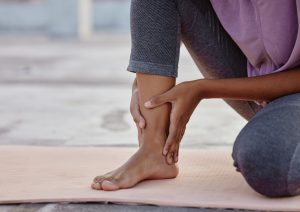Lower back pain can be a frustrating and limiting condition, but there’s good news—incorporating specific exercises into your daily routine can help relieve and even prevent lower back pain. With expert advice from back specialists and doctors, you’ll find several easy, effective exercises that target the root causes of back pain. Dr. Ghalambor, a board-certified pain management expert at NorTex Spine & Joint Institute, emphasizes, “Consistency with back-strengthening and flexibility exercises is key to achieving long-term relief from lower back pain.” Here are exercises recommended by back doctors to help you manage and stop lower back pain effectively.
1. Cat-Cow Stretch
The Cat-Cow stretch is a gentle way to warm up and stretch the spine. Start on your hands and knees with a neutral spine. Slowly arch your back towards the ceiling (Cat), then dip your spine towards the floor while looking up (Cow). Repeat for 10–15 cycles. This exercise is often recommended by back doctors because it improves spinal mobility and can relieve tension in the lower back.
2. Child’s Pose
This calming stretch relaxes the muscles in your lower back, easing pain and tightness. Begin on your hands and knees, then sit back onto your heels while extending your arms forward. Hold this position for 20–30 seconds, breathing deeply. Dr. Ghalambor explains, “Child’s Pose is an excellent stretch that not only relaxes the lower back but also opens up the hips, which can help in reducing back pain.”
3. Knee-to-Chest Stretch
Lie on your back and bring one knee toward your chest while keeping the other leg straight. Hold for 15–20 seconds, then switch legs. This exercise gently stretches the lower back muscles and can reduce stiffness.
4. Pelvic Tilt
Pelvic tilts are ideal for strengthening core muscles and easing lower back pain. Lie on your back with your knees bent and feet flat on the floor. Tighten your abdominal muscles and press your lower back into the floor. Hold for 5–10 seconds, then release. Repeat this exercise 10–15 times to increase strength and stability in your core and back.
5. Bridge Exercise
Strengthening the glutes and lower back can provide essential support to the spine. Lie on your back with your knees bent and feet flat on the ground. Lift your hips toward the ceiling, squeezing your glutes. Hold for a few seconds at the top, then slowly lower back down. Perform this exercise 10–15 times, as it can improve stability and relieve pressure on the lower back.
6. Seated Forward Bend
This stretch targets the lower back and hamstrings, which are often tight in people with back pain. Sit on the floor with your legs extended straight in front of you. Reach forward, aiming to touch your toes, and hold for 15–20 seconds. Regular stretching of the hamstrings can relieve lower back pain by reducing strain on the lower spine.
7. Piriformis Stretch
Tightness in the piriformis muscle can lead to lower back pain. Lie on your back with both knees bent. Cross one leg over the other, resting your ankle on the opposite knee, and gently pull the crossed leg toward your chest. Hold for 15–20 seconds on each side.
8. Wall Sits
This exercise strengthens your lower back, glutes, and legs. Stand with your back against the wall and slide down as if sitting in a chair. Hold this position for 10–15 seconds, then stand up. Wall sits are simple but effective for building strength and relieving lower back pain.
9. Cobra Stretch
The Cobra stretch targets the lower back, helping to alleviate pain and improve flexibility. Lie on your stomach with your hands under your shoulders. Gently lift your chest, keeping your elbows slightly bent and your lower body on the floor. Hold for 10–15 seconds, then lower back down.
10. Bird Dog
This exercise improves core stability, essential for supporting the lower back. Start on all fours, then extend one arm and the opposite leg simultaneously. Hold for a few seconds, then switch sides. Repeat for 10–15 reps on each side. “Bird Dog strengthens the core and lower back, helping with balance and reducing lower back pain,” advises Dr. Ghalambor.
Preventing Lower Back Pain with Exercise
Engaging in these exercises regularly can improve strength, flexibility, and stability, all of which are essential in preventing future back pain. If you’re experiencing chronic pain or discomfort, consulting with a back doctor or specialist is always recommended. They can assess your situation and suggest exercises tailored to your needs.
If you’re in the Allen, McKinney, Frisco, Dallas, or Garland areas, and need expert advice on lower back pain treatment, reach out to NorTex Spine & Joint Institute. Schedule a consultation with Dr. Ghalambor, a highly qualified back specialist near you, for a customized plan to relieve your lower back pain and regain your mobility.








